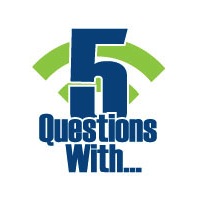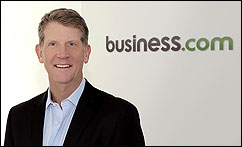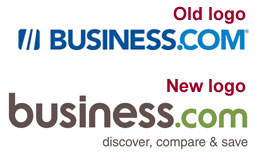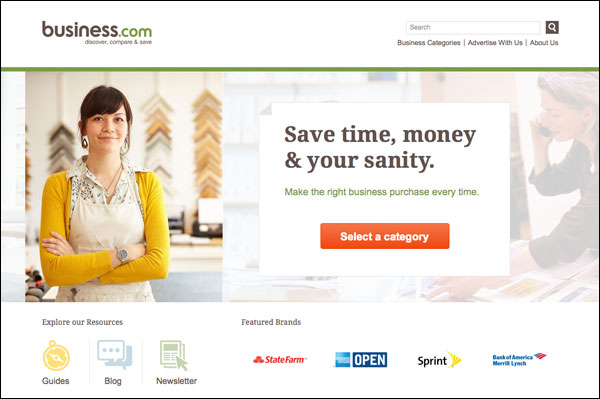What’s Behind The Business.com Relaunch: 5 Questions With CEO Tony Uphoff
You’ve probably heard this before: Business.com has recently launched a new brand, a new website and new products that aim to extend the company’s appeal to both B2B marketers and buyers. The site has gone through a number of changes over the years since its founding in 1999, but the new Business.com is more of […]

The site has gone through a number of changes over the years since its founding in 1999, but the new Business.com is more of a matchmaking service than it’s been before.
The new home page walks B2B buyers into the process of selecting a provider and asks questions along the way to help the site connect the user with the best matching vendors. “We do see ourselves as the e-Harmony for small-to-medium enterprise buyers and the marketers looking to reach and engage with these lucrative buyers,” says Business.com CEO Tony Uphoff.
Uphoff himself is one of Business.com’s recent changes, too, having just come on board in January with 20 years in business media/information experience, including most recently serving as CEO of UBM TechWeb.
As part of our ongoing “5 Questions With” series (which began recently on our sister site, Search Engine Land), we traded questions and answers via email with Uphoff about the new Business.com and the current state of B2B marketing in general.
5 Questions With Tony Uphoff About The New Business.com
Matt McGee: I’ve always thought of Business.com as a basic business directory. The new home page seems to play that down in favor of being a kind of matchmaker-type service for the B2B crowd. Is that a fair description?

Whether we call it a business directory, B2B search engine, or a purchase resource, our goal is this: deliver content that aligns with buyers needs instead of sending them off on a safari to ultimately get frustrated in the end. The new home page and product pages deliver infographics, checklists, directory listings that aid in the research phase while the expanded suite of integrated lead forms follow the natural steps buyers take.
Our unique process of digital engagement, lead scoring and matching complimented by phone interviews with over 5,000 businesses each month assure buyers have what they need to make an educated purchase. We do see ourselves as the e-Harmony for small-to-medium enterprise buyers and the marketers looking to reach and engage with these lucrative buyers.
Tell me more about these phone calls. What kind of things do you ask in the interviews?
We have two teams that conduct our phone interviews. Our customer care team engages with buyers who fill out a lead form to learn more about their specific needs and their businesses. For instance, what region of the country are they in? What does their installed base of other business products and services look like? Our team captures this data and uses it to assure we best match the right buyers with the right business product providers.
Our business solutions team interviews buyers about their purchasing process to learn what they purchased and from whom. During this call, they learn more about the business and what additional related business product or services they are evaluating. From these interviews, we conduct lead nurturing consultations and take the insights we’ve gleaned to our advertising customers sharing with them how they’ve ranked against competitors.
What metrics are you going to be watching this year for determining the success of the new website?
There are two types of metrics: surface level insights and effective deep insights.
From a surface level standpoint, we track traffic and various engagement metrics by source. In essence we focus on metrics that will allow us to understand how we are doing with buyers at all stages in their process — from the “top of the funnel” all the way through to purchase. Repeat visitors, direct to site traffic, percent of users viewing 2+ pages, time on site and conversion events like registration, lead submission and interaction with our content (advertisers) are all examples of metrics we track carefully.
From a deeper insight, we are looking at the ARPU (average revenue per user) over time and pairing that with LTV (lifetime value) of registrants and users over a 36-month period. This is where we determine and benchmark the Value per Action, or Value per Prospect and look at our relationship with the user. Are they closer connected to the brand and our product experience? Are they more likely to distribute our content and share our insights with their network? This is where we look into the social sphere and engagement outside of our site.
The press release about the Business.com relaunch mentions that you got input from “a Ph.D. in Human Computer Interaction.” Is that someone on staff full-time, and what kind of guidance did s/he have during the site redesign?
Shanshan Ma is our Director of User Experience & Product Management, part of our staff, and on the product UI team. The product and design team worked alongside other departments to gather the data for the redesign. We conducted qualitative and quantitative research studies in order to meet the buyer’s needs. It’s important to note that for a long time, our pages were focused solely on the marketer. Now, our goal is to focus on the users and deliver the type of information they need in real time. Creating a more informed buyer leads to better engagement with marketers.
We are also already hard at work on version 2.0, which will include further refinements to our platform, an expansion of our suite of performance marketing products, heightened levels of contextual content integration and functionality as well as social and mobile enhancements. Our intention is to have Business.com serve as a platform that buyer, marketer and industry application developer, can each harness to run and grow their businesses.

The new logo and company identity are reflective of our mission. Simply put, we help people grow their businesses. We take this very seriously and wanted our site, our logo and company identity to match our mission. Given that we are also a growth company we also felt it reflects our culture and personality as well!
Marketing has changed a lot in the last few years — new channels, new opportunities, and new challenges. What’s your sense of the current state of B2B marketing and how it has adapted to all of this?
According to Outsell Research Inc’s Outlook 2013 research, the top five concerns of CMO’s at B2B companies today are:
- How to balance branding and lead generation.
- How to leverage social media.
- Too many options, not enough integration
- Prospects increasingly hard to identify and engage
- Analytics are difficult and costly
We hear all of these challenges and more from our customers. What our marketing customers want today is an integrated suite of performance marketing products that we deliver as a service. Marketing as a Service, if you will.
We’re starting to see marketers focusing on “branded response” where they are combining advertising and lead generation programs in a more consistent and integrated fashion. And they are looking to work with brands and companies that can help them from end to end as opposed to having so many individual suppliers. We are also seeing a significant interest in content marketing, brands wanting to leverage their content assets to engage prospects and customers. We think this intersection between Paid Media and Owned Media will be a very vibrant growth area and one our customers are very interested in.
More From The “5 Questions With” Series:
Contributing authors are invited to create content for MarTech and are chosen for their expertise and contribution to the martech community. Our contributors work under the oversight of the editorial staff and contributions are checked for quality and relevance to our readers. The opinions they express are their own.
Related stories
